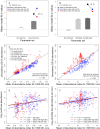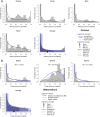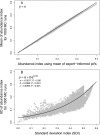Modeling the status, trends, and impacts of wild bee abundance in the United States
- PMID: 26699460
- PMCID: PMC4711882
- DOI: 10.1073/pnas.1517685113
Modeling the status, trends, and impacts of wild bee abundance in the United States
Abstract
Wild bees are highly valuable pollinators. Along with managed honey bees, they provide a critical ecosystem service by ensuring stable pollination to agriculture and wild plant communities. Increasing concern about the welfare of both wild and managed pollinators, however, has prompted recent calls for national evaluation and action. Here, for the first time to our knowledge, we assess the status and trends of wild bees and their potential impacts on pollination services across the coterminous United States. We use a spatial habitat model, national land-cover data, and carefully quantified expert knowledge to estimate wild bee abundance and associated uncertainty. Between 2008 and 2013, modeled bee abundance declined across 23% of US land area. This decline was generally associated with conversion of natural habitats to row crops. We identify 139 counties where low bee abundances correspond to large areas of pollinator-dependent crops. These areas of mismatch between supply (wild bee abundance) and demand (cultivated area) for pollination comprise 39% of the pollinator-dependent crop area in the United States. Further, we find that the crops most highly dependent on pollinators tend to experience more severe mismatches between declining supply and increasing demand. These trends, should they continue, may increase costs for US farmers and may even destabilize crop production over time. National assessments such as this can help focus both scientific and political efforts to understand and sustain wild bees. As new information becomes available, repeated assessments can update findings, revise priorities, and track progress toward sustainable management of our nation's pollinators.
Keywords: crop pollination; ecosystem services; habitat suitability; land-use change; uncertainty.
Conflict of interest statement
The authors declare no conflict of interest.
Figures









References
-
- Winfree R, Williams NM, Gaines H, Ascher JS, Kremen C. Wild bee pollinators provide the majority of crop visitation across land-use gradients in New Jersey and Pennsylvania, USA. J Appl Ecol. 2008;45(3):793–802.
-
- Ollerton J, Winfree R, Tarrant S. How many flowering plants are pollinated by animals? Oikos. 2011;120(3):321–326.
-
- Morse RA, Calderone NW. The value of honey bees as pollinators of U.S. crops in 2000. Bee Culture. 2000;128:1–15.
-
- Losey JE, Vaughan M. The economic value of ecological services provided by insects. Bioscience. 2006;56(4):311–323.
MeSH terms
LinkOut - more resources
Full Text Sources
Other Literature Sources
Research Materials

